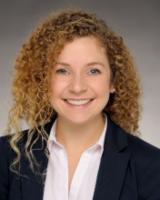
Heather Todak is a professional engineer with Wiss, Janney, Elstner Associates, Inc. (WJE), located at their Los Angeles, California office. Prior to joining WJE, she received her M.S. degree in Civil Engineering from Purdue University and her B.S. degree in Civil and Environmental Engineering from Virginia Tech. Heather is part of a core group for nondestructive testing practitioners at the company and is active in the American Concrete Institute (ACI) Committee 228 for Nondestructive Testing and associated subcommittees. Her work with WJE has included several large-scale nondestructive testing projects, including work on civil-infrastructure facilities, bridges, and buildings.
This seminar is intended to highlight current industry standards for performing nondestructive testing (NDT) by presenting several case studies from recent project work. Techniques included ground-penetrating radar, ultrasonic tomography, ultrasonic pulse velocity, acoustic emissions and impact echo will be discussed. Nondestructive testing (NDT) is a valuable tool for understanding and evaluating potential flaws, failure mechanisms, and construction defects. In existing structures, NDT is often the first step in identifying potential deterioration, determining the origin of collapses, or designing retrofits for historic structures form which documentation is not available. In new construction, NDT is often performed to evaluate finishing or placement defects or confirm as-built construction in concrete structures. Understanding construction problems with NDT techniques as opposed to destructive testing can provide significant reductions in cost and reduce unnecessary construction delays. Nondestructive testing practitioners are often utilized to document structural conditions to support litigation cases relating to construction defects and structural failures or disasters.
Amber Samaniego
a2samaniego@ucsd.edu
